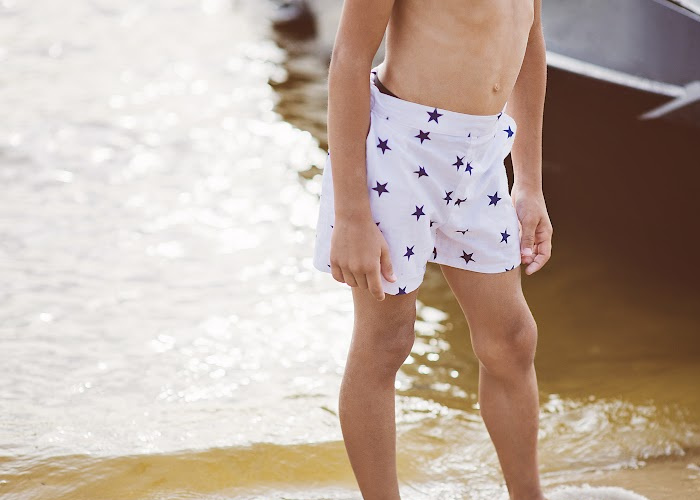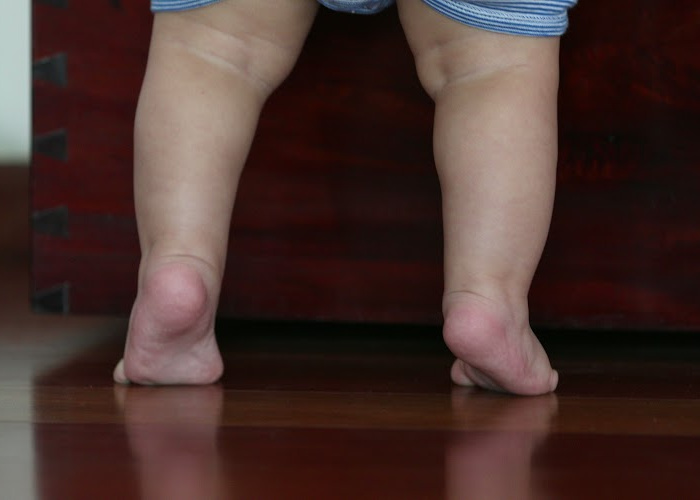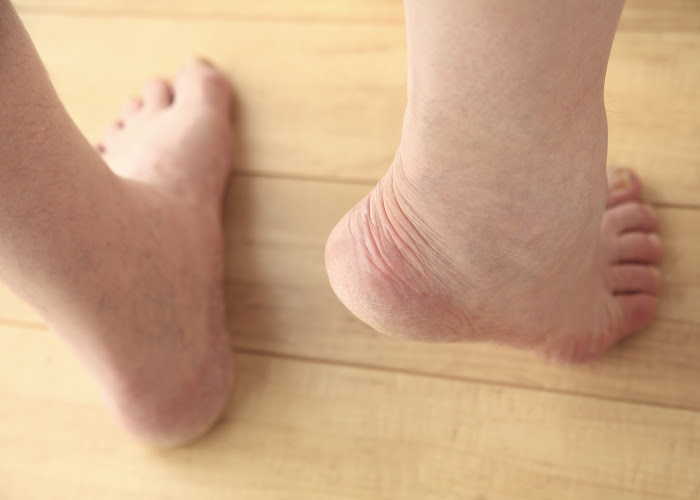It's crucial to know that students with autism and ADHD need special study strategies. Autism…

Why do some Autistic Children Walk on Tip Toes?
The sight of a young child walking on their tiptoes can be endearing and is a common aspect of early development. However, the causes of toe walking in autism compel us to look a little deeper into this behavior, especially as it persists in older children. For those questioning why do children with autism walk on their toes, the answer often leads to an intersection of developmental biology and early childhood behaviors.
An autistic child toe walking is not an unusual occurrence, and while it might initially be dismissed as a quirk, this action can sometimes be a telltale sign of autism and other neurological conditions. Delving into the reasons behind this can offer invaluable insights into not just the physical aspects but also the cognitive and sensory processing differences that are part of the autism spectrum.
Understanding the nuances of toe walking can provide clarity for caregivers and professionals as they navigate the spectrum of behaviors associated with autism. Through a lens of compassion and curiosity, supporting children in their developmental journey becomes a more informed and proactive endeavor.

Exploring the Link Between Autism and Toe Walking
As we delve into the relationship between autism and toe walking, it’s important to comprehend the complexities behind this behavior often observed among autistic children. Shedding light on the subject, we aim to differentiate between developmental quirks and indicative signs of deeper neurological variances that come with Autism Spectrum Disorder (ASD).
Understanding Toe Walking in the Context of Autism Spectrum Disorder
Toe walking in children, a condition where a child walks on the balls of their feet, is a common developmental stage. However, in children with autism, this may persist beyond the early childhood years. Toe walking in autistic children can be more than a transient phase; it frequently points to neurodevelopmental differences that warrant further examination and understanding.
The Role of the Vestibular System in Persistent Toe Walking
The vestibular system and autism have a close and intricate connection. This system, involving the inner ear and brain, serves as the foundation for our sense of balance and spatial orientation. Several studies suggest that dysfunction within the vestibular system may contribute to the persistence of toe walking in children with autism, leading to challenges with coordination and stability.
Examining Toe Walking as a Potential Indicator of ASD
While toe walking on its own is not a definitive sign of ASD, it is a behavior that, often combined with other developmental concerns like language delays, may serve as a potential indicator. In assessing autism and toe walking, it’s important to observe the child’s overall behavior and the broader context of their motor skills and sensory responses.
Research and clinical observations emphasize the importance of a thorough understanding when examining toe walking in children with autism. As interventions are considered, the focus should remain on evidence-based methods that ensure the child’s well-being and developmental progress.

Why do Autistic Children Walk on Their Toes?
Toe walking in autistic children is a behavior that can raise concern and curiosity among parents and healthcare professionals. Notably, this manner of walking isn’t exclusive to children on the autism spectrum, as it’s a developmental stage many young kids go through. However, the intriguing question persists: why do autistic children walk on toes with greater frequency and for longer periods?
Observations in the field suggest that toe walking is something of a vestige from infancy, where it’s quite natural for children to explore movement in this way. Most typically-developing children cease toe walking and adopt a heel-to-toe gait between six months and two years of age. But when this toe walking persists beyond such developmental milestones, especially past the age of two, it can sometimes serve as a clue to potential neurodevelopmental delays or conditions such as Autism Spectrum Disorder (ASD).
- Neurological Maturity: Persistent toe walking beyond the age of three may indicate neurological immaturity. This is particularly significant as some autistic children may face challenges with motor skills that lead to prolonged toe walking.
- Physical Considerations: Interventions to address toe walking, such as physical therapy and exercises aimed at stretching the Achilles tendon, have had varied success. The unique physical needs of children with ASD can shape the approach and effectiveness of these treatments.
- Sensory Processing: Through the lens of sensory processing differences that often accompany autism, toe walking may be a child’s adaptive response to uncomfortable sensory input on the soles of their feet or an attempt at seeking proprioceptive feedback.
- Dysfunctional Vestibular System: For some autistic individuals, a poorly functioning vestibular system, crucial for balance and spatial orientation, might contribute to a preference for toe walking.
While there is no single answer to the question of why an autistic child might walk on toes, the intersection of developmental, neurological, and sensory factors provides a composite view. Ultimately, the goal for parents, therapists, and pediatricians is not just to understand the ‘why’ but also to support the child’s overall development and comfort with patience and informed strategies.
Conclusion
In synthesizing our understanding of toe walking and autism, it’s clear that while this phenomenon is more pronounced in children with ASD, it is neither exclusive to them nor definitive of their condition. Addressing why do autistic children walk on toes is akin to unraveling a complex tapestry of sensory, neurological, and developmental threads. Through recognizing toe walking as one of many potential signs, we can more accurately support the growth and comfort of autistic individuals.
Appreciating that toe walking in children with autism is a multi-faceted issue, our approach must be equally multi-dimensional, privileging non-invasive interventions initially over medical or surgical ones. Such strategies may include physical therapy or sensory integrative techniques that cater to the unique sensory profiles of these children.
It is this compassionate and inquisitive stance that fosters an environment where every autistic child toe walking is provided the opportunity to progress and thrive on their terms, celebrating the distinct ways in which they encounter and move through their world.
Supporting Autistic Children Who Walk on Their Toes
The journey of assisting autistic children who exhibit toe walking often starts with gentle practices such as physical exercises and stretches, promoting a heel-to-toe gait without undue distress. This empathetic support upholds the dignity of each child, reinforcing a sense of safety and understanding.
When to Seek Professional Help for Toe Walking
It becomes essential for caregivers to consider professional guidance when toe walking persists well beyond the expected age bracket, potentially signifying an underlying neurological condition. Expert evaluation and intervention can help in mitigating any associated limitations while safeguarding the child’s long-term physical development.
Looking Beyond Toe Walking: Embracing Neurodiversity in ASD
Finally, recognizing toe walking within the broader spectrum of ASD behaviors calls us to an overarching acceptance and celebration of neurodiversity. By doing so, we affirm the unique qualities and abilities of autistic individuals, while promoting a society that is inclusive and supportive of all its members.
FAQs
Why do some autistic children walk on tip toes?
Children with autism may walk on their toes due to a variety of reasons including sensory sensitivities, vestibular system irregularities, or comfort. It’s often seen as a part of their developmental pattern and may indicate neurological immaturity related to autism spectrum disorder.
What causes toe walking in autism?
Toe walking in autism can be caused by a combination of factors, such as sensory processing challenges, vestibular dysfunction, the child’s attempt to cope with environmental stimulus, or simply as a preference for that particular gait. It’s a complex behavior that can result from the interplay of multiple aspects of autism spectrum disorder.
Can toe walking be a sign of autism?
While toe walking is a common behavior in early childhood, persistent toe walking may be one of the signs that can be associated with autism. It should not be considered as a definitive sign of autism on its own, but rather, when present with other symptoms, it can indicate the need for a comprehensive developmental evaluation.
How does the vestibular system affect toe walking in children with autism?
The vestibular system plays a crucial role in balance and movement. Dysfunctions in this system, which are common in children with autism, can lead to postural instability and coordination difficulties, resulting in atypical walking templates like toe walking. These children may toe walk as they seek stability and comfort.
Should I seek professional help if my child is toe walking?
Yes, if your child persistently toe walks beyond the age of two, especially if they have other developmental concerns, it’s important to seek professional advice. A comprehensive evaluation can determine the underlying causes and whether it is linked to autism or another condition, and will help in providing appropriate interventions.
How can we support autistic children who walk on their toes?
Supporting children who toe walk involves understanding the behavior within the context of their autism. It can include interventions such as physical therapy, occupational therapy, and sensory integration techniques. Creating a supportive environment and ensuring the child feels understood and comfortable is also key to managing toe walking.
Is toe walking only related to autism?
No, toe walking is not exclusive to autism. While it can be more common in children with ASD, toe walking also occurs in neurotypical children or can be linked to other conditions such as cerebral palsy or muscular dystrophy. It is important to look at toe walking within the broader context of a child’s overall development and behavior.
How do sensory sensitivities relate to toe walking in children with autism?
Many children with autism have heightened or altered sensory perceptions. Walking on their toes can be a way to reduce the discomfort caused by certain textures or sensations under their feet. Alternatively, it can also be a response to proprioceptive or vestibular input needs, as toe walking may provide sensory feedback that is calming or organizing for them.



This Post Has 0 Comments